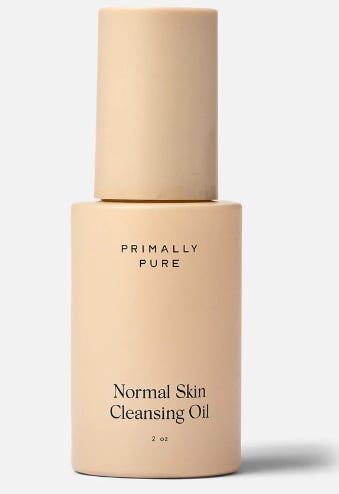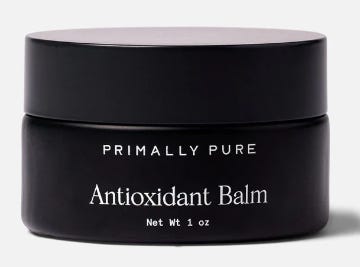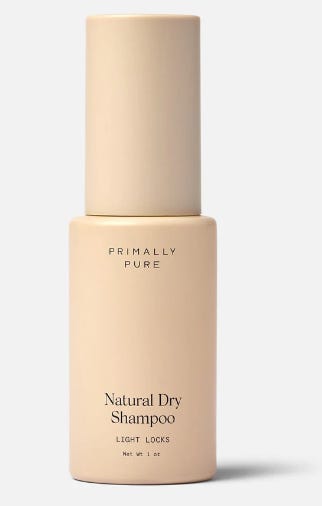Last week I shared the health implications of manufactured citric acid and its prevalence in food, beauty products, household cleaners, supplements, and more. Now, I want to dive deeper into the surprising places this common ingredient lurks, from your beauty routine to your cleaning supplies.
What Is Citric Acid And Why Should I Care?
While citric acid used to come from citrus fruits like lemons and limes, many companies now use a cheaper, mass-produced chemical version. I was literally shocked when I discovered how this manufactured product is made – and even more shocked to learn the source of its manufacturing: MOLD!
Many people are unaware that their symptoms could be linked to mold, especially when it's present in something as common as manufactured citric acid. Some common symptoms associated with mold exposure include:
Respiratory Issues: Coughing, wheezing, shortness of breath, sinus congestion, and runny nose.
Skin Irritations: Rashes, hives, itching, and dry skin.
Neurological Symptoms: Headaches, migraines, brain fog, memory problems, and difficulty concentrating.
Digestive Problems: Abdominal pain, bloating, diarrhea, and nausea.
Fatigue and Weakness: Persistent tiredness and lack of energy.
Joint Pain and Muscle Aches: Unexplained pain in joints and muscles.
Increased Sensitivity: To light, sound, and smells.
Mental Health Issues: Anxiety, depression, and mood swings.
How Has This Stuff Wormed Its Way Into So Many Foods And Products?
We already know that citric acid is common in processed foods, especially those with a tart or tangy flavor. But it goes far beyond just sour candies and fizzy drinks.
And, yes, it is even in some organic products as well.
It’s allowed due to a Grandfathering and a loophole with the food label designations.
But how did we get here?
How did manufactured citric acid become so ubiquitous?
The Grandfathering Effect:
One major factor is the 'grandfathering' of certain food additives. In the early days of food regulation, many substances already in use were allowed to continue being added to products without rigorous re-evaluation. This was often done for practical reasons, to avoid disrupting existing manufacturing processes. Citric acid, having been used for decades, fell into this category. As regulations evolved, new substances faced stricter testing and approval processes, but older ones, like citric acid, were often 'grandfathered' in.
Common Ingredients to Look For:
Citric Acid: This will be explicitly listed.
Citrates: Any ingredient ending in "-citrate" (e.g., sodium citrate, potassium citrate, zinc citrate).
"Natural" Preservatives: Some brands use citric acid as a "natural" preservative.
pH Adjusters: Citric acid is used to balance pH.
AHA (Alpha Hydroxy Acid): In skincare and some other personal care products, citric acid may be listed as an AHA, especially in exfoliating or brightening products.
Are you starting to suspect citric acid might be impacting your health?
Now, the big question: where is this stuff hiding?
Unfortunately, citric acid is pervasive, making it incredibly challenging for those with sensitivities to avoid.
Foods & Beverages:
When it comes to foods and beverages, citric acid is used for a variety of purposes, including flavor enhancement and preservation. This means it can be found in a wide range of products, even those you might not expect. Here are some common examples, but remember: be a label detective!
Sodas: Many mainstream and organic sodas (e.g., certain flavors of Coca-Cola, Pepsi, Sprite, Zevia, and Culture Pop Soda) use citric acid for flavor. Diet sodas often use it as well.
Juice Drinks: Fruit-flavored drinks (not 100% juice) are very likely to contain citric acid. Even some 100% juices may have added citric acid. Look at brands like Ocean Spray, Minute Maid, etc.
Snack Foods: Potato chips (especially flavored varieties), crackers, and some pretzels may contain citric acid. Look at brands like Lay's, Ruffles, Ritz, etc.
Candy: Sour Patch Kids, Skittles, Starburst, YumEarth Organic Candies and many gummy candies almost always contain citric acid.
Yogurt: Some flavored yogurts, especially those with fruit or added tartness, may contain citric acid. Look at brands like Yoplait, Dannon, Stonyfield Organic Kids Yogurt Pouches, Organic Valley Fruit on the Bottom Yogurt etc.
Salad Dressings: Many commercial salad dressings (especially vinaigrettes and low-fat versions) contain citric acid. Look at brands like Kraft, Hidden Valley Ranch, Annie's Organic Dressings, Primal Kitchen Organic Dressings, Whole Foods 365 Organic Dressings etc.
Canned Goods: Some canned fruits, and vegetables in syrup or brine or pasta sauce may contain citric acid, such as Del Monte and Hunt’s.
Milk Alternatives: Look at brands, such as Almond Breeze Unsweetened Chocolate, and Good Plant Cheese.
Supplements/Medications:
Electrolytes/Other: Vital Protein Collagen, Nuun electrolytes, and Ultima electrolytes.
Vitamins: Flinstones Gummies Children’s, One A Day, Complete Multivitamins etc.
Effervescent Tablets: Many effervescent vitamin and mineral supplements (like some vitamin C or magnesium supplements) use citric acid and/or citrate salts to create the fizzing reaction when dissolved in water.
Laxatives: Magnesium citrate is a common over-the-counter laxative, such as Milk of Magnesia.
Potassium Supplements: Potassium citrate is a common form of potassium supplement. It is used to prevent kidney stones (especially calcium oxalate or uric acid stones) and to treat metabolic acidosis.
Urinary Alkalinizers: Some medications used to make urine less acidic contain citrate salts.
Oral Solutions and Syrups: Citric acid is used in some liquid medications to adjust pH, improve taste, or act as a preservative.
Laundry:
SHOCKER ALERT! It is even in many laundry products, including “clean” brands like 365 and Seventh Generation.
Try my simple & effective 'Golden Glow Clean Laundry Mix'!
Combine 1 cup of Arm & Hammer Washing Soda with 1 cup of Borax and store in a mason jar. Depending on your washing needs this should last up to one month.
For each laundry load, pour 1/4 cup of the powder mix directly into the washing machine tub. Then, add 1-2 tablespoons of Dr. Bronner's Liquid Soap to the detergent dispenser.
Have you discovered citric acid in your current laundry detergent?
Citric Acid in Your Beauty Arsenal: A Hidden Irritant
Many of us strive for clean, natural beauty routines.
Yet, even products marketed as "organic" or "natural" can contain citric acid. It's often used as a pH adjuster, preservative, or even an alpha-hydroxy acid (AHA) for exfoliation. This can be problematic for those with mold-related sensitivities, CIRS (Chronic Inflammatory Response Syndrome), MCAS (Mast Cell Activation Syndrome), autoimmunity, or weakened immune systems. Even if you don’t have these health issues, you don’t want to add to your body’s toxic load by using products that bombard your system with essentially, mold.
Beauty Products:
Skincare: Cleansers, toners, serums, moisturizers, and masks (especially those with exfoliating properties), such as Honest Beauty Gentle Gel Cleanser.
Hair Care: Shampoos, conditioners, styling products, and hairsprays, such as Suave Kids 2-i-1 Shampoo Conditioner, and Kerastase Shampoo and Conditioner.
Makeup: Foundations, concealers, blushes, lipsticks, and even eyeshadows.
Deodorant: Both conventional and natural deodorants can contain citric acid.
Body Care: Body washes, lotions, and scrubs.
Dental Care: Many toothpastes and mouthwashes, such as 365 Flouride Toothpaste, Tom’s of Maine Toothpaste, Hello Toothpaste,
So, what the heck do we do to avoid citric acid?
Do not worry I have you covered.
Here are some of the products I've personally vetted and now use regularly. Remember, ingredients can shift, so always refer to the product label for the most current details.
Primally Pure:
When I began my journey to eliminate citric acid and other toxins from my life, finding suitable beauty products was a challenge. Many 'natural' brands that I was using still contained this hidden ingredient. Primally Pure is committed to clean, whole ingredients, and I've been thrilled with the results.
Here are the Primally Pure products I use and highly recommend.
Blue Tansy Deodorant:
Normal Skin Cleansing Oil:
Antioxidant Balm:
Almond and Vanilla Body Butter:
Natural Dry Shampoo:
Jasmine Body Oil:
Hair Products:
Innersense Finishing Spray
Color Wow Bombshell Volumizer:
Color Wow Dream-in Coconut Infused Leave-In Conditioner:
Bado Shampoo and Conditioner:
Gucci Westman (Westman Atelier) Makeup:
Dental Care:
Now that we've uncovered the hidden sources, let's talk about strategies for minimizing your exposure and supporting your body's natural detoxification process.
Embrace the Golden Goddess Plate: Focus on a diet rich in whole foods, as outlined in my Golden Goddess Plate. This approach naturally supports detoxification pathways and helps reduce inflammation.
Consider a Short Elimination Period: Consider eliminating high-citric-acid foods and products for a short period, such as 2-4 weeks, to see if your symptoms improve. This can help you identify potential triggers and personalize your approach.
Work With Me to Get to the Root Cause: If you're struggling to identify the root cause of your symptoms, or if you need personalized guidance on your detoxification journey, consider working with me. Together, we can explore your unique health history, identify potential triggers, and create a tailored plan to support your golden glow.
Nourishing Lab: Your Partner on the Path to Your Golden Glow
Head over to our new website to explore a treasure trove of resources, including:
In-depth blog posts: Dive deep into achieving the Golden Glow through clinical nutrition.
Comprehensive resources and guides: Learn about healthy eating, functional testing, and holistic healing modalities.
Wellness Shop: I’ve meticulously chosen products formulated to address specific needs and promote overall well-being.
And much more!

















